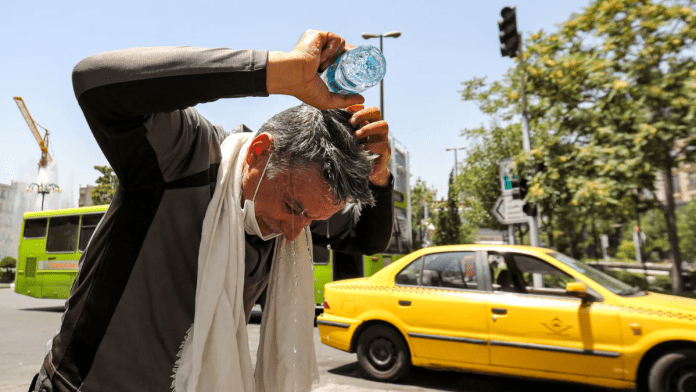🕒 Last updated on July 22, 2025
Iran is currently experiencing one of its worst heatwaves in years. Temperatures in many regions of the nation have surpassed 50 degrees Celsius.
Heatwave Grips Iran with Temperatures Crossing 50°C
Some cities in the southwest recorded temperatures as high as 52.8°C, making it one of the hottest weeks of the year so far. Even Tehran, the capital city, reached 41°C, with residents saying it feels much hotter due to the dry and scorching sun.
The extreme heat has made it very difficult for people to step outside during the day. Streets are empty during peak afternoon hours as the sun becomes unbearable. People are trying to stay indoors and keep themselves cool. Many say they need to take showers twice a day just to get through the heat. Even so, cooling off is not easy when water is scarce.
Due to the unbearable conditions, the government has declared Wednesday a public holiday in Tehran. Officials say this move is to help save both electricity and water and also to protect people from the harsh sun. The decision comes after the national meteorological service warned that this would be the hottest week of the year in Iran.
Water Crisis Deepens as Dams Run Dry
Alongside the heat, Iran is also facing a serious water shortage. Five years have passed since the nation’s drought began. This year, rainfall has been even lower than expected. As a result, water levels in the country’s reservoirs and dams are dropping fast.
Iran has hundreds of dams that were built from the 1950s onwards. Millions of people rely on these dams for their water. However, with very little rainfall and rising temperatures, many of these dams are now almost empty. For example, the Karaj dam, which supplies water to the Tehran province, is at its lowest level in years.
In some parts of Tehran and other cities, water supply is being cut for long hours during the day. People have reported water outages lasting more than 12 hours in certain areas. The government is trying to manage the remaining water by reducing supply, but this has caused major inconvenience to families and businesses.
The Ministry of Energy has said that talks are ongoing with nearby countries like Turkmenistan, Afghanistan, Tajikistan, and Uzbekistan to import water. These discussions are still in early stages and may take time before any real change is seen.
Government Urges Public to Cut Down on Water Use
With the heat showing no signs of slowing and water reservoirs running low, the government has made a strong appeal to all citizens. People are being asked to limit their water use immediately. Officials have warned that the situation is much worse than it appears and could become unmanageable if steps are not taken now.
The president of Iran has called this water crisis “very serious” and urged all departments to work together. He said that just managing water through systems and planning is no longer enough. People also need to reduce how much water they use every day.
🛢️ Billion-Dollar Blow! U.S. Cracks Down on Iran’s Covert Oil Empire Fueling Middle East Chaos
Air conditioning and water pumps are using large amounts of electricity and water. This has caused power cuts in many regions. Cities like Mashhad are experiencing load-shedding for as long as nine hours each day. This implies that people are left without power during the hottest parts of the day.
The heat is not only affecting comfort but also putting health at risk. Doctors are warning people to stay hydrated, avoid going out during peak sun hours, and use water wisely. In areas where water is already being cut off, it becomes even harder to follow these basic health tips.
Additionally, some Iranian citizens blame the situation’ escalation on upstream dams in nearby nations. A dam constructed in the Afghan province of Herat, for instance, has been charged with decreasing the amount of water that reaches Iranian towns. This has made the already weak water supply even worse.
As the crisis continues, many families are storing water in large containers at home to get through long outages. But with the reservoirs depleting quickly, there are growing fears that even these emergency measures may not be enough in the coming weeks.

